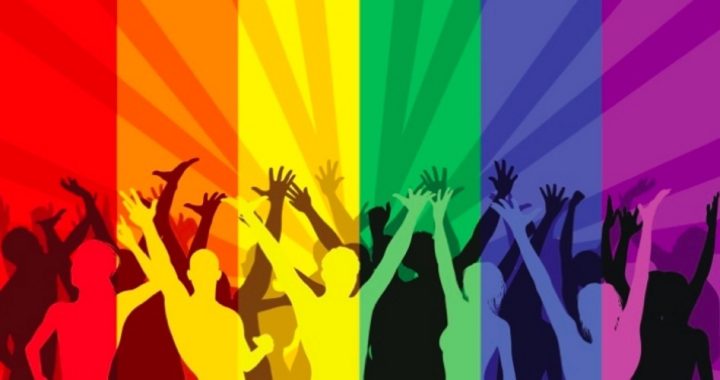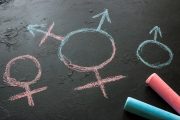
Recently amended municipal regulations in New York City could fine a person as much as $250,000 for the “willful, wanton, or malicious” offending of a transgender person.
On December 21, 2015 the New York City Commission on Human Rights published an updated version of Local Law No. 3 (2002); N.Y.C. Admin. Code § 8-102(23), known as the New York City Human Rights Law (NYCHRL), setting out expanded definitions of “rights” of people who demand on being addressed and accommodated according to the gender of their choice, rather than the gender of their genetic code.
It is remarkable and noteworthy that the commission — including Mayor Bill de Blasio and commissioner Carmelyn Malalis — apparently presumes to nullify existing federal discrimination statutes. The first paragraph of the newly promulgated code declares that the NYCHRL “must be construed ‘independently from similar or identical provisions of New York state or federal statutes, such that ‘similarly worded provisions of federal and state civil rights laws [are] a floor below which the City’s Human Rights law cannot fall, rather than a ceiling above which the local law cannot rise.’”
That’s a curious assumption of authority by state and city leaders, particularly in light of the rejection of the exercise of similar powers by states who pass laws beyond the “ceiling” of existing federal legislation.
As Founding Era senator and veteran of the War for Independence, John Taylor of Carolina, once wrote, “Principles and words are the disciplinarians of construction.” In light of this statement, the principles and words contained in the New York City Human Rights Law reveal that the government of New York City has abandoned discipline and constructed a code that defies ordinary understanding and biological facts.
For example, the third paragraph of the law declares that gender is one’s “actual or perceived sex and shall also include a person’s gender identity, self-image, appearance, behavior or expression, whether or not that gender identity, self-image, appearance, behavior or expression is different from that traditionally associated with the legal sex assigned to that person at birth.”
In other words, your opinion, not your DNA, determines your gender.
That might not be all that remarkable in today’s climate of calling war peace and peace war, but the city of New York uses that definition in the execution of a long list of additional anti-discriminatory regulations.
Section 1 of the NYCHRL purports to “ensure protection for people whose ‘gender and self-image do not fully accord with the legal sex assigned to them at birth.’”
The regulations don’t confine their restrictions to transgender people, however. “Other gender non-conforming individuals” are safe behind the shield of the city’s laws, too.
In fact, many Americans may not even be familiar with the classifications of people protected by the recently promulgated codes. Below is a sample of handy definitions supplied by Section II of the Legal Enforcement Guidance on the Discrimination on the Basis of Gender Identity or Expression released on December 21 by the NYC Commission on Civil Rights.
Cisgender: an adjective denoting or relating to a person whose self-identity conforms with the gender that corresponds to their biological sex, i.e, someone who is not transgender.
Gender Identity: one’s internal deeply-held sense of one’s gender which may be the same or different from one’s sex assigned at birth. One’s gender identity may be male, female, neither or both, e.g., non-binary. Everyone has a gender identity. Gender identity is distinct from sexual orientation.
Gender Expression: the representation of gender as expressed through, for example, one’s name, choice of pronouns, clothing, haircut, behavior, voice, or body characteristics. Gender expression may not be distinctively male or female and may not conform to traditional gender-based stereotypes assigned to specific gender identities.
If you’re not confused enough, here are a few more terms from the official list of definitions:
Gender Non-Conforming: an adjective sometimes used to describe someone whose gender expression differs from traditional gender-based stereotypes. Not all gender non-conforming people are transgender. Conversely, not all transgender people are gender non-conforming.
Intersex: a term used to refer to a person whose reproductive or sexual anatomy and/or chromosomal pattern does not fit typical definitions of male or female. There are many different medical diagnoses or conditions that an intersex person may have.
That last one is important, as the regulation banning and imposing punishment for discrimination on the basis of gender identity “also encompasses discrimination against someone for being intersex.”
The code states that harassment is discrimination, bringng up the question: what constitutes harassment? Section III provides the answer: “Gender-based harassment can be a single or isolated incident of disparate treatment or repeated acts or behavior.”
A single or isolated incident of harassment is sufficient to charge a person with violation of this law and expose him to the fines and other punishments established therein.
One would assume that lawyers helped draft these regulations, and even first-year law students know that vague laws are often (and should always be) void for failing to give proper and effective notice to citizens of their responsibilities under the law.
A lawyer would have to work very hard to write a code vaguer than this one.
For example, Section III sets out that one is being harassed when one is being treated “less well” because of one’s gender. Less well.
Here are some specific examples provided in the text of the code of when one is guilty of treating another “less well” because of a person’s gender choice:
Intentional or repeated refusal to use an individual’s preferred name, pronoun or title. For example, repeatedly calling a transgender woman “him” or “Mr.” after she has made clear which pronouns and title she uses.
Refusal to use an individual’s preferred name, pronoun, or title because they do not conform to gender stereotypes. For example, calling a woman “Mr.” because her appearance is aligned with traditional gender-based stereotypes of masculinity.
In order to avoid the potential violations of the law, the NYC Human Rights Commission suggests that “covered entities” should establish “a policy of asking everyone what their preferred gender pronoun is so that no individual is singled out for such questions and by updating their systems to allow all individuals to self-identify their names and genders.”
Then, the agency warns the potential policy makers that, “They should not limit the options for identification to male and female only.”
As has become common in this muddled morass of redefining traditional (and biologically inarguable) words and concepts, the code declares:
“The NYCHRL requires that individuals be permitted to use single-sex facilities, such as bathrooms or locker rooms, and participate in single-sex programs, consistent with their gender, regardless of their sex assigned at birth, anatomy, medical history, appearance, or the sex indicated on their identification.”
Unless that isn’t understood easily enough, the commission provides the following clarification: “For example, it is an unlawful discriminatory practice to prohibit a transgender woman from using the women’s bathroom.”
Finally, in Section IV — the section on penalties — the commission establishes fines of up to $125,000 for simple violations and up to $250,000 for violations that are deemed “willful, wanton, or malicious.”
Such is the state of the law in the country’s largest city.
The complete document is available online (click here for the PDF).



